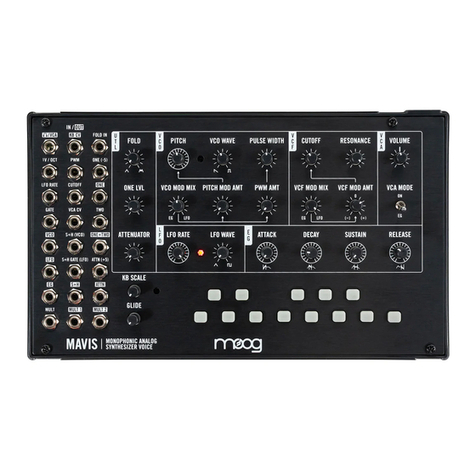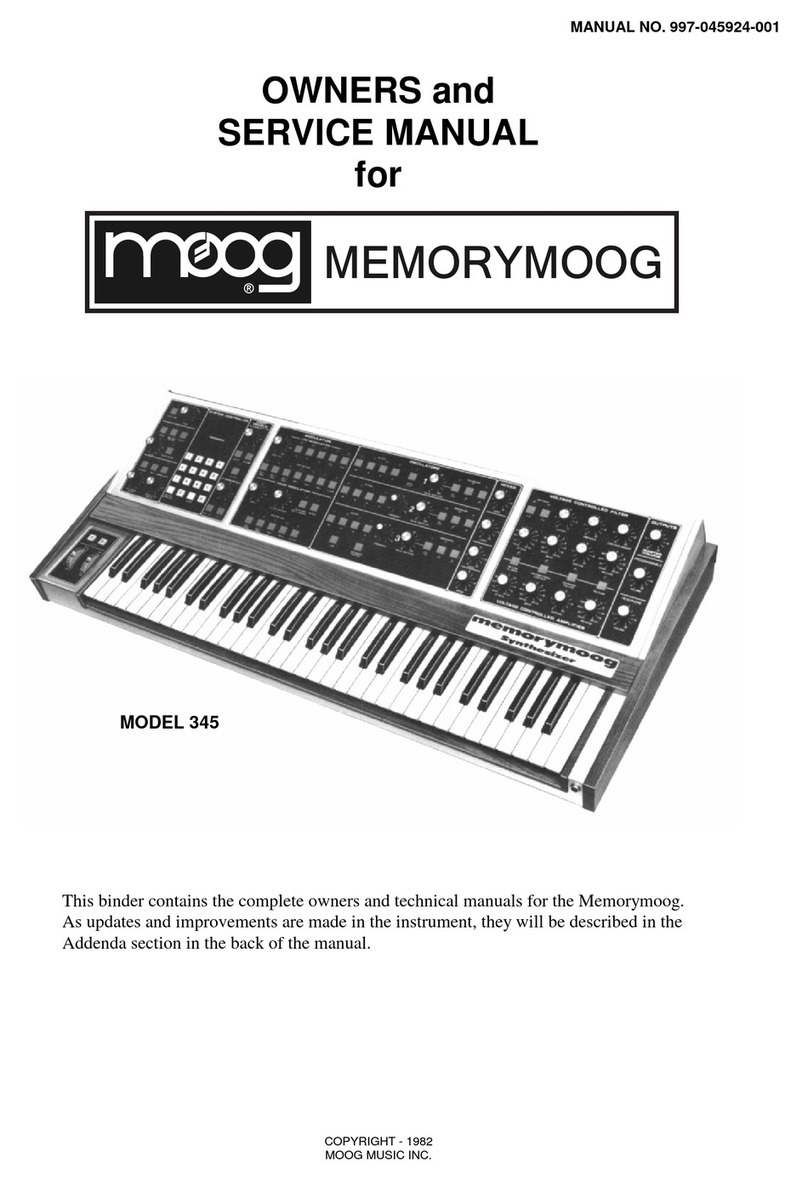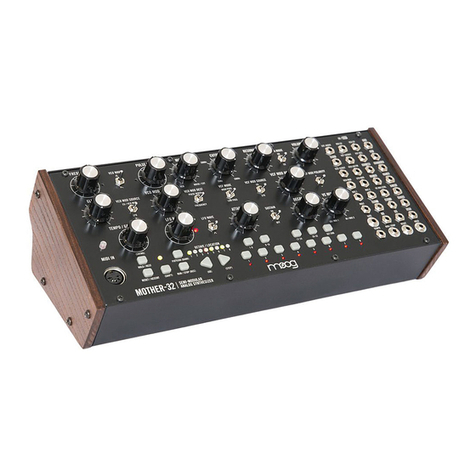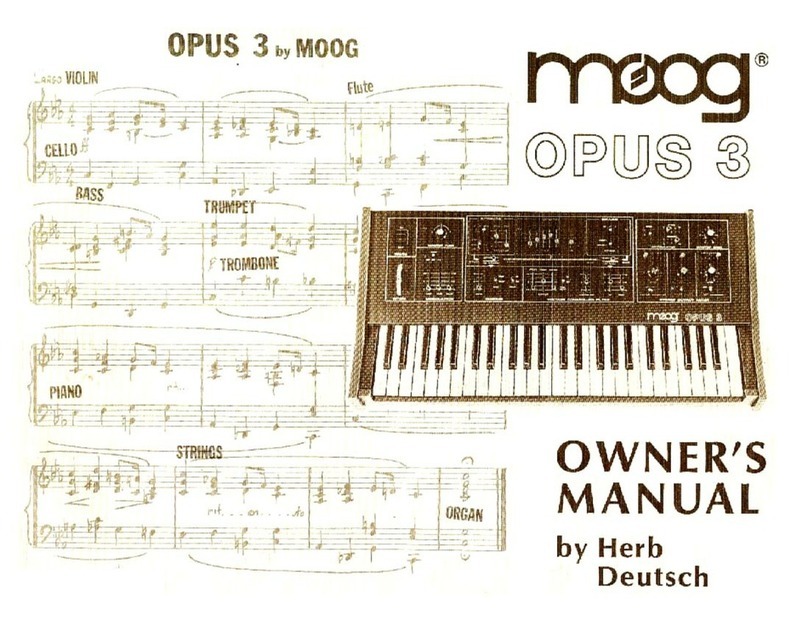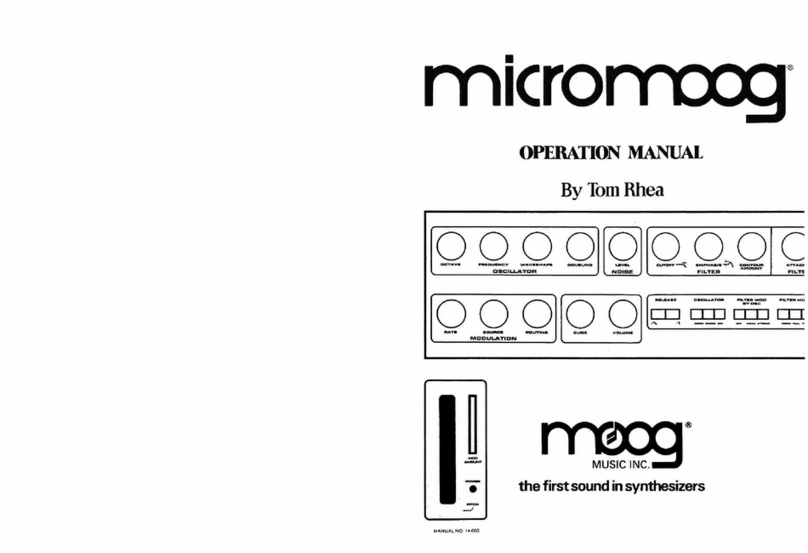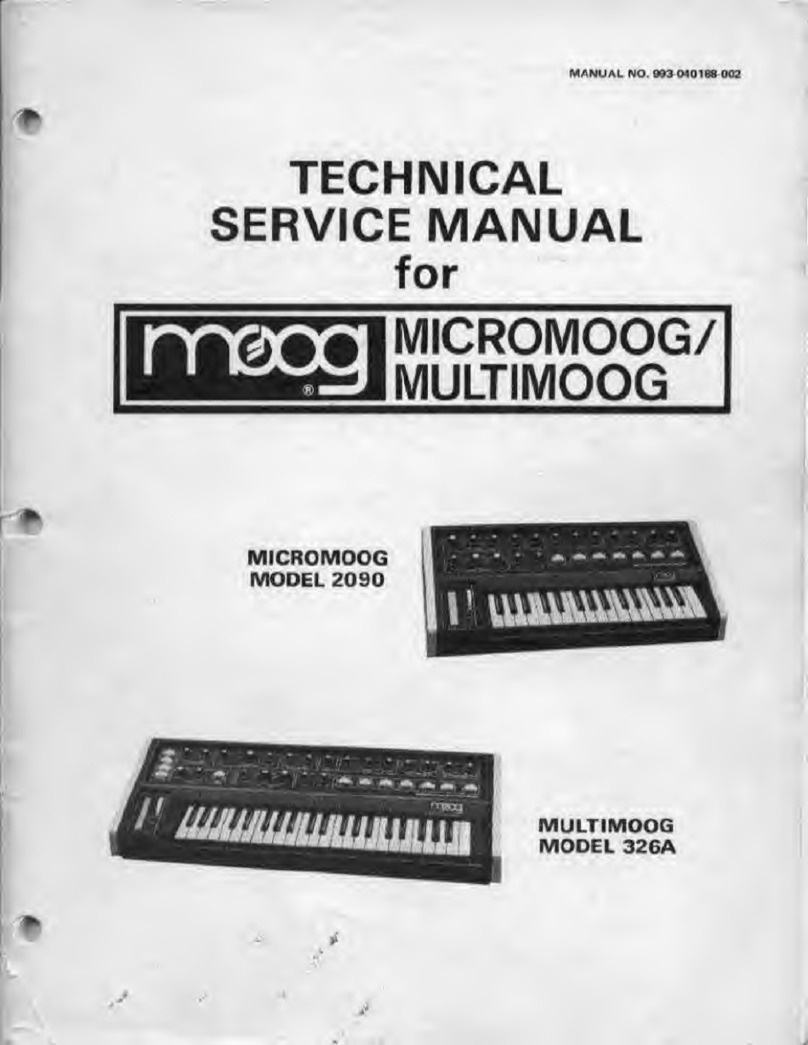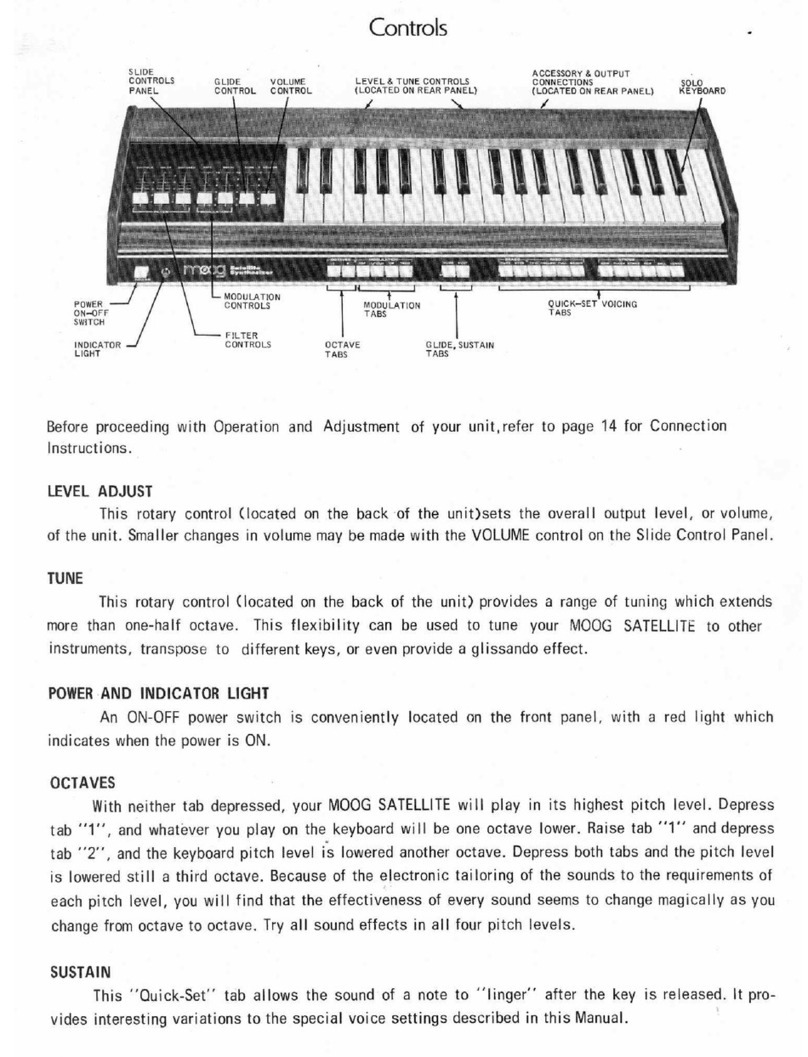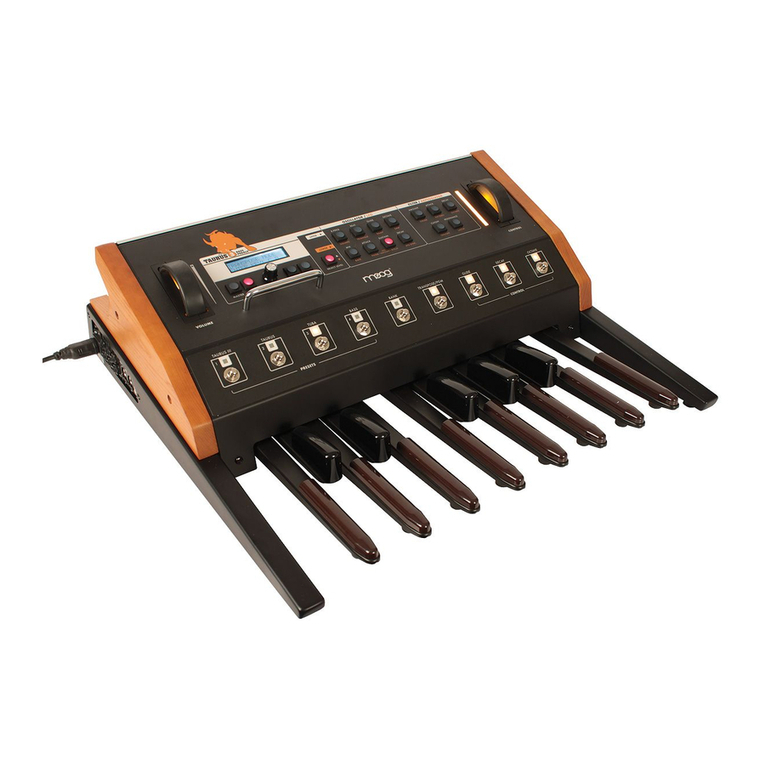
First Steps | 4
First Steps
Matriarch is an extremely
powerful and exible synthesizer
composed of many different
modules based on Bob Moog’s
original designs. Its semi-modular
nature means that, while it is full
of patch points, there are many
patch connections already made
for you under the hood.
Let’s begin by designing a sound that
does not require patching. First, start
by matching your Matriarch parameter
settings to the initialized patch
diagrammed on the previous page. Play
some notes and some chords to get an
idea for how this initialized patch sounds.
This patch results in a nice, clear sound,
but let’s get a bit of movement going. A
common way of doing that is to generate
some extra movement in the lter. When
we press a key the FILTER ENVELOPE
will open the lter by an amount set by
the ENVELOPE AMT knob in the FILTERS
section.
Layering a MODULATION OSCILLATOR
will add a bit of vibrato-like texture to
our sound. This is such a common sound
design technique that we don’t have to
physically patch anything to achieve it.
Turn up the CUTOFF AMT knob in the
MODULATION section and then raise
the MOD wheel to apply the modulation
oscillator to the lter cutoff. You should
hear the lter opening and closing based
on the settings in the MODULATION
section.
Now, let’s try and achieve this same result
through patching. Through this exercise
we’ll learn how to use the all-important
utilities section of Matriarch and get a
better handle on how to use modulation
and patching to greatly expand
Matriarch’s sound palette.
Before we begin, turn the CUTOFF AMT
knob back down and return the MOD
wheel to zero.
